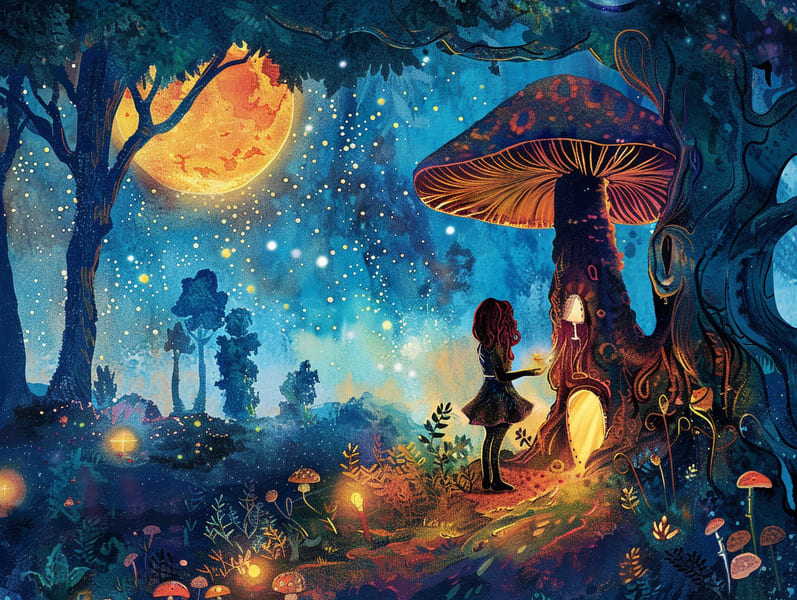The Inception of Short Fairy Tales with Its Unfading Appeal.
The Inception of Short Fairy Tales with Its Unfading Appeal.
Blog Article

Fairy tales for kids have historical significance. These tales have been spoken from one generation to the next centuries before they were ever inscribed. They originated from a variety of backgrounds, including European traditions. They were initially conveyed among elders, often carrying themes and messages concerning the societal norms and beliefs of the time.
The famous Grimm duo, Jacob and Wilhelm, were among the first to collect many of these beloved narratives. Their published works, "Grimm's Fairy Stories," included stories like "The True Bride," "The Story of Hansel and Gretel," and "Snow White," which have since become essentials in the world of timeless fairy tales. Similarly, H. C. Andersen's whimsical narratives, such as "The Story of the Little Mermaid," and "The Duckling that Could," have gained the love worldwide, securing their place in the pantheon of famous fairy tales.
Despite their ancient origins, fairy tales remain as meaningful as ever, especially as bedtime stories for kids. These charming stories are now available in various formats, including vibrantly illustrated books, fantastical animations, and internet fairy tales.
Their continued relevance can be ascribed to several whimsical characteristics:
Key Lessons: Old fairy tales often present important moral lessons. Stories like "The Shepherd Boy and the Wolf" teach the merit of integrity, while "The Tortoise and the Hare" highlight the values of resolve and modesty. These tales offer kids clear distinctions between virtue and vice, developing their moral compass in a tender yet important way.
Empathy and Understanding: Traditional fairy tales frequently portray personalities facing struggles and tests, prompting readers to sympathize with their struggles and encourage their triumphs. For instance, "Beauty and Her Beast" points out the necessity of seeing inner beauty to understand the inner being of a being, cultivating empathy and insight.
Cultural Awareness: Many fairy tales are deeply ingrained in the cultural contexts from which they blossomed. Learning from these fairy tales can provide captivating looks into different traditions, promoting a sense of world understanding and recognition.
Inventiveness and Fantasy: The fanciful elements in classic fairy tales—talking animals—kindle children’s imaginative ideas. These fairy tales transport readers to fantasy realms, inspiring creative ideas and a sense of magic that remains a lifetime.
Traditional fairy tales are not only charming but also teaching. They work as fantastical tools in building various brain and heart skills in the young. When fairy tales are recited, they foster language skills by bringing new terms and detailed sentence structures. This practice also promotes hearing perception and mindfulness, as kids stay focused, enthusiastic to see what happens next.
Furthermore, contemplating the themes and characters of fairy tales can improve reasoning skills and critical thinking. Young readers learn to pinpoint patterns, predict happenings, and grasp cause and effect. These deliberations also promote young readers express their thoughts and feelings, nurturing their emotional intelligence.
In today’s electronic age, the existence of online fairy tales has made these tales more reachable than ever. Web platforms and digital apps present vast collections of classic fairy tales that can be experienced or listened to anytime, anywhere. Fairy tales narrated are particularly well-received, making available an interactive method for little ones to enjoy these charming stories. Voice books and narrated videos lead characters and settings to life, often augmented by entrancing musical scores and background music that augment the narrative adventure.
The persistent attraction of website old fairy tales lies in their ability to adjust to present eras while holding onto their basic principles. Contemporary modernizations of these stories often show more inclusive figures and modern settings, making them relevant to today’s audience. However, the fundamental themes of boldness, humanity, and justice remain unchanged, continuing to move young listeners of all ages.
Fairy tales also offer a sense of comfort and understanding. They feature a methodical narrative with a recognizable beginning, middle, and end, often coming to a close with the termination of conflicts and the triumph of rightness over wrongness. This assuredness can be heartening for little ones, sharing a sense of security in an unstable world.
Old fairy tales continue to mesmerize and enlighten new generations, maintaining their magic and value in modern society. As nighttime stories for kids, they yield a perfect blend of delight and instruction, cultivating moral values, empathy, and creativity. The abundance of internet fairy tales and the well-liked nature of fairy tales recited ensure that these classic stories remain attainable to new generations.
By guarding and releasing these tales, we continue to glorify the rich tapestry of folklore and cultural heritage. Whether you are viewing a artistically illustrated book, enjoying a internet library, or listening on an audiobook, the spell of bedtime fairy tales is always within reach. These tales teach us of the immortal magic of narratives and its ability to bring us together across eras and regions.
Be it you are accessing a artistically illustrated book, enjoying a online library, or listening via an narrated book, the charm of popular fairy tales is always within reach.
These narratives illustrate of the endless magic of narratives and its ability to bind us across generations and cultures, forging a link that delights and instructs alike.